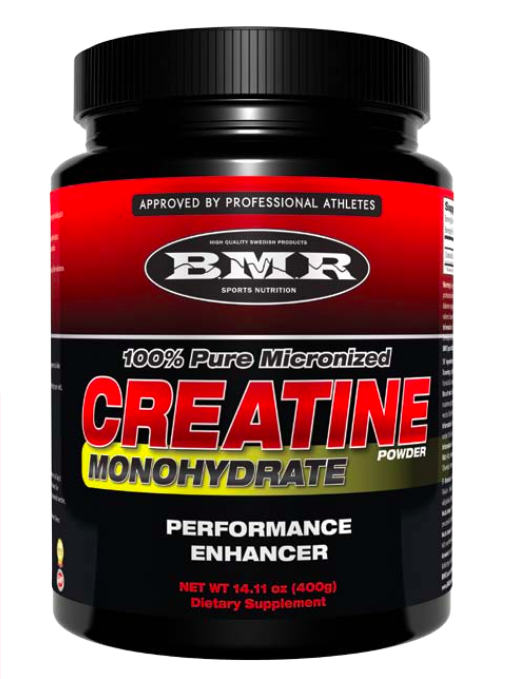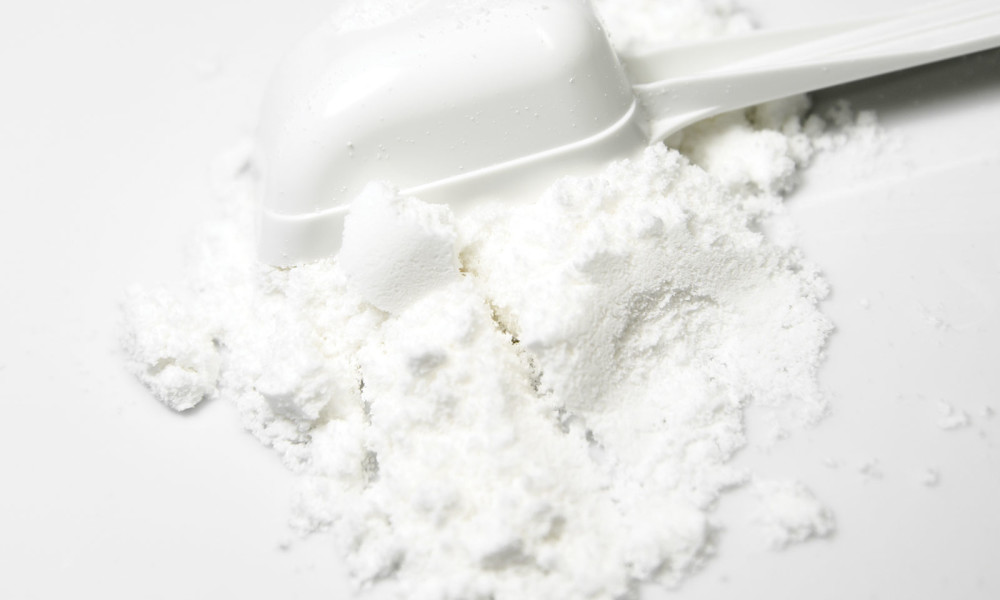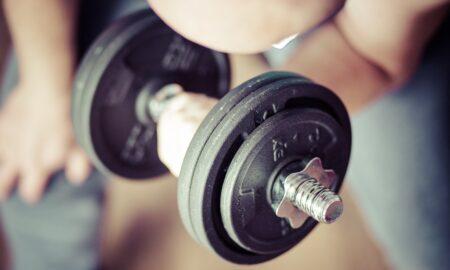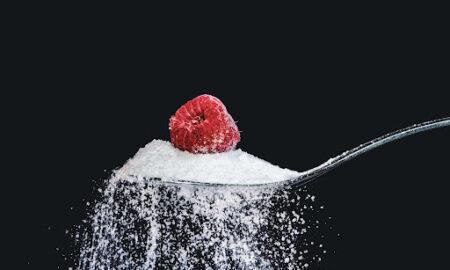
When you walk in to any nutrition store, one of the supplements that is always recommended when trying to increase muscle mass is creatine. To give you an idea of its popularity, creatine is estimated to generate 100-million dollars this year in sales. For the most part, we know what creatine does and how it works. New research has recently explored new benefits and the effectiveness of different forms of creatine when it comes to impacting aesthetics and athletic performance. Creatine is a nonessential nutrient that is synthesized in our bodies and helps supply energy to our cells, muscle cells in particular. It is the primary fuel for short, high-intensity exercise. Creatine is more effective than ever at stimulating an amazing array of muscle and health benefits.
Any exercise or movement that lasts up to 10 seconds (some research says 30 seconds) uses the phosphocreatine system. Within this system, creatine has a phosphate added to it to create phosphocreatine. Phosphocreatine then has the ability to donate this phosphate group to create ATP, which is the fuel source for our cells. Since creatine is a mediator in energy production, its use as a supplement has been widely researched. Over 500 studies have been conducted on the effectiveness of creatine as a supplement, and more than 70 percent show significant improvements in performance. With short-term supplementation, research shows that creatine increased maximal power, strength, and repeated sprint performance. Additionally, longterm studies have shown greater physique benefits, most notably increased lean mass.
Supplementing with creatine can even reduce fatigue. If there is more creatine available in the muscles, there can potentially be more phoshocreatine available to create energy. Another way it can reduce fatigue is by acting as a buffer. When lifting weights, there is an increase in hydrogen ions in the muscles, which cause “the burn” as you fatigue. However, there is a reaction in the phosphocreatine system that consumes a hydrogen ion. This staves off the burning sensation that forces you to put down the weight. So less burn means you can go longer in your set and potentially lead to shorter recovery times between sets. Another benefit to creatine supplementation is greater expression of IGF-1, an important hormone that dictates muscle hypertrophy. It activates a specific metabolic pathway (mTOR), which is responsible for protein synthesis. Although no studies have been able to show directly that this is the cause for greater muscle mass in individuals who supplement with creatine, it’s likely that this is one of the possible mechanisms by which creatine helps you get jacked

www.bmrstore.com
HOW TO USE IT:
The most common way to take creatine is to load it for about a week, using five-gram doses spread four times throughout the day. Once the muscle becomes saturated, a maintenance dose of three to five grams per day is used. This causes a rapid increase in creatine concentration and is useful for someone who has a copetitive event in the coming days. Another popular method simply employs three to five grams of creatine per day from day one. Although there is no rapid saturation in the muscles, saturation will occur after about 28 days. This is relatively cheaper and less likely to lead to GI distress and weight gain. A third method is supplementing according to bodyweight, which is believed to produce a more precise dose since muscle mass is partly responsible for absorption of creatine. If this is your chosen method, a dose of 0.3 grams per kilogram of bodyweight is recommended for loading and .029 grams per kilogram of bodyweight for maintenance. Because creatine supplementation does cause weight gain, it’s something that physique competitors should approach carefully. But recent work has shown that if you supplement relative to your bodyweight, you may still be able to receive the benefits of creatine without the added pounds. In fact, supplementing with as little as .03 grams per kilogram per day can still lead to improvements in performance. When co-ingested with carbohydrates and proteins, it appears to be absorbed by the tissues better due to specific transporters that are activated. So 50 to 80 grams of carbs and/or 30 to 50 grams of protein will help get more creatine in your muscles. Lastly, there is no need to cycle on and off creatine. Recent research has shown the receptors and endogenous synthesis (what we make in our bodies) are not negatively impacted. But if you do wish to cycle, take between four and six weeks off.
TYPES OF CREATINE:
The most common form of creatine is creatine monohydrate, but because people can be “non-responders,” supplement companies have started generating different forms of creatine to reach a greater number of individuals. Here’s what we know about the different forms, how they work, and who can benefit form them. Creatine Monohydrate If you have tried creatine before, it was most likely creatine monohydrate. This form is the most widely available, most researched, and most commonly used form of creatine. It also produces the most consistent results. Therefore, if you respond to creatine monohydrate, it’s probably best to stick with it simply because it’s more consistent than other forms.
CREATINE SALTS
Although there are a number of creatine salts (creatine bonded with a strong acid to form a salt), only a few have been adequately researched. A popular form is creatine HCL; however, no scientific evidence exists on its effectiveness. There are other creatine salts that have been reviewed scientifically, such as creatine pyruvate, creatine citrate, and magnesium chelate salts. Creatine pyruvate has been shown to decrease lactate concentrations and spark improvements in aerobic metabolism. Unfortunately, the research been conflicting and none of the studies have compared creatine pyruvate to creatine monohydrate. This also goes for creatine citrate. Studies have shown increased an aerobic work capacity and delayed fatigue, but none have compared it to creatine monohydrate. So they can be ergogenic, but will it outperform monohydrate? This question remains to be answered. Creatine magnesium chelate is becoming more popular in supplements. It has been shown to be at least as effective to monohydrate and may possibly increase intracellular water concentrations of creatine because it has greater water solubility. Therefore, if you aren’t responding to monohydrate, give magnesium chelate a try.
CREATINE ETHYL ESTER
This form of creatine was produced to help increase bioavailability; however, it is somewhat controversial. It’s a very popular substitute for monohydrate, yet it has not been shown to be better than monohydrate. My advice: Stick to the monohydrate or try the magnesium chelate, as this form has not been shown to be superior.

CREATINE MIXTURES
Creatine mixtures, also known as PEG creatine, have been created to try and increase water solubility of creatine, as well as half life and resistance to degradation due to pH. This would mean that smaller doses can be used and there is a smaller likelihood of GI distress. And for the most part, this has been supported. In fact, the studies used smaller doses (one to 2.5 grams) of the creatine mixture compared to a five-gram dose of monohydrate. It appears that the PEG creatine is effective but may not outperform monohydrate at smaller doses than what was used. Creatine Precursors The main form of this is Creatinol-O- Phosphate (COP) and is not actually creatine. It is structurally similar to creatine and thought to act as a precursor. Unfortunately, to my knowledge, only one study has investigated its use as an ergogenic aid. And while it did improve handgrip strength, COP was delivered via injection or infusion. Therefore, more research is needed to determine the effects of oral supplementation of COP on performance.
CREATINE CURES WHAT AILS YOU
Creatine supplementation is not just for athletic performance. Research has shown that creatine, when dosed appropriately, improves hydration and heat tolerance during exercise. When creatine is absorbed into the body, it requires more water to be absorbed as well in order to achieve balance. This leads to increased total body water and a lower core temperature during exercise. Another frontier that is expanding with creatine supplementation is its effect on cognition, which is vital to athletic performance. Research has shown that creatine increased IQ scores and memory in treatment groups. This research provides a valuable platform for determining if creatine supplementation is a viable treatment for those recovering from traumatic brain injuries.
Creatine Tip!
Do not consume creatine with a caffeinated beverage. Caffeine can negate the benefits of creatine, leaving you confused as to why your performance and lean mass has not improved. Save the creatine for after your workout.


 When you walk in to any nutrition store, one of the supplements that is always recommended when trying to increase muscle mass is creatine. To give you an idea of its popularity, creatine is estimated to generate 100-million dollars this year in sales. For the most part, we know what creatine does and how it works. New research has recently explored new benefits and the effectiveness of different forms of creatine when it comes to impacting aesthetics and athletic performance. Creatine is a nonessential nutrient that is synthesized in our bodies and helps supply energy to our cells, muscle cells in particular. It is the primary fuel for short, high-intensity exercise. Creatine is more effective than ever at stimulating an amazing array of muscle and health benefits.
When you walk in to any nutrition store, one of the supplements that is always recommended when trying to increase muscle mass is creatine. To give you an idea of its popularity, creatine is estimated to generate 100-million dollars this year in sales. For the most part, we know what creatine does and how it works. New research has recently explored new benefits and the effectiveness of different forms of creatine when it comes to impacting aesthetics and athletic performance. Creatine is a nonessential nutrient that is synthesized in our bodies and helps supply energy to our cells, muscle cells in particular. It is the primary fuel for short, high-intensity exercise. Creatine is more effective than ever at stimulating an amazing array of muscle and health benefits.























You must be logged in to post a comment Login